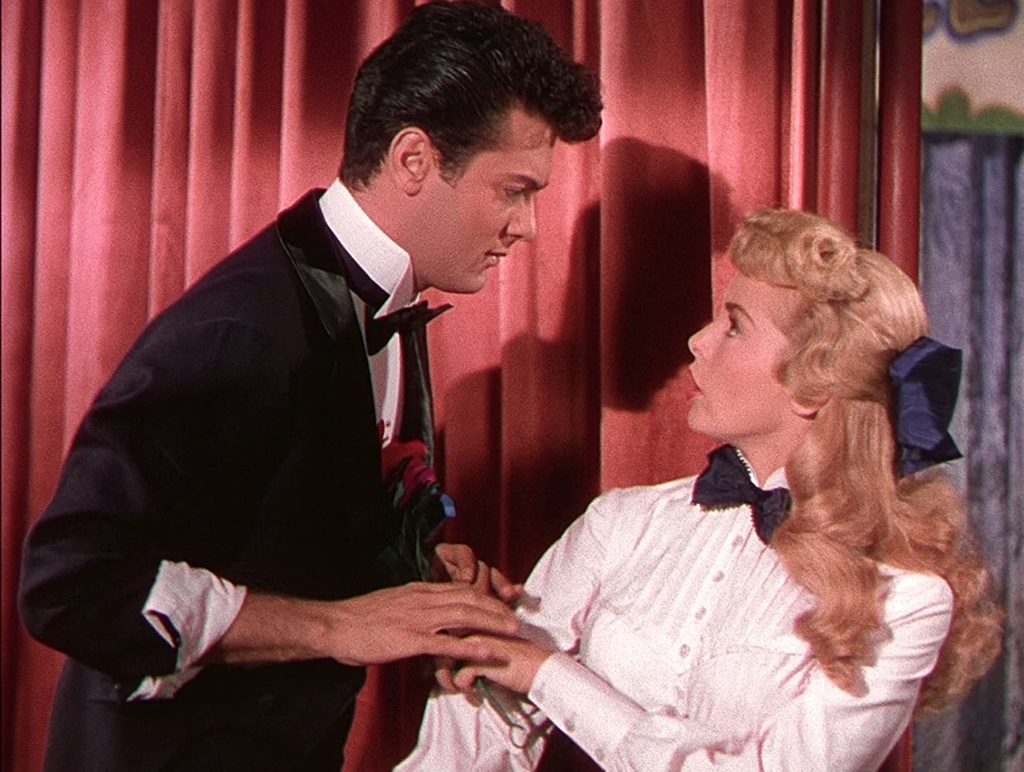
George Marshall is perhaps best remembered for directing the James Stewart comedies Destry Rides Again (1939) and Pot O’ Gold (1941). Marshall’s career as a film director spanned over fifty years, and made him one of the go to journeyman directors of Hollywood’s golden age. In 1953, he helmed George Pal’s production of Houdini for Paramount Pictures, a film that represents the very pinnacle of the Hollywood star system.
The Technicolor films of Hollywood’s golden age are inherently fanciful due to the very nature of the color process. All the colors on the screen are highly saturated, radiating with a sort of painterly glow. From Houdini’s opening, it is apparent that what is to follow is more than just an account of a magician’s life story, but a whirl wind of Hollywood’s excess and an exercise in highly creative non-fiction.
The film’s concerns are not so much for the facts of Harry Houdini’s life, but for the depiction of husband and wife Tony Curtis and Janet Leigh within the context of Houdini; portraying Harry and Bess respectively. Houdini’s life story and his relationship to his wife are glamorized and censored to propagate the wholesome image of Curtis and Leigh. Houdini’s infidelities, alcoholism, and even the circumstances of his death are changed in the film, codified to better fit the archetypal mold established in such films as Jim Thorpe: All American (1951), The Jolson Story (1946) and Dr. Ehrlich’s Magic Bullet (1940). The purpose of this blatant twisting of the facts is to sell a product. Hollywood in its golden age was a factory (to barrow a phrase from Kenneth Anger) like any other, producing a product and selling that product. Audiences did not want to see a film about an alcoholic illusionist; they wanted to see a popular celebrity playing a glamorized version of another celebrity.
Watching Houdini, one will notice that Bess Houdini never makes good on her threats to leave Harry, that she always returns more obedient than before. One reason for this is to maintain the credibility that Leigh and Curtis’ marriage is a happy one. Along the same vein, the sexism in Harry Houdini’s behavior demonstrates that only a male can put anything (his work, hobby or friends) before his partner on a list of priorities. This does not make the sexism in Houdini shocking; this form of sexual politics was standard practice in major Hollywood films for a very long time, even into the sixties. What is shocking about the film Houdini is how clearly the film caters to the Hollywood machine.
Typically, a director or producer will try and underplay the salesmanship taking place in a film, often with a highly stylized production or performance. Houdini appears to embrace the plasticity that accompanies the commercial artifice present in Hollywood productions. That Marshall’s film does this makes the viewing experience of Houdini comparable to eating cotton candy and funnel cake at a county fair. Everything in Houdini is absurdly sweet and pretty (from Janet Leigh herself to the dark green of the Detroit river), but in the end, very bad for your teeth.
That a film about Harry Houdini should play into the hands of both the studio and the audience so unashamedly is what’s also wonderfully brilliant about this film. Intentionally or not, Houdini has at its very core of character portraiture Houdini’s desire to please his audience and be loved by them. In this respect, Houdini the film was produced in exact accordance with the will and desires of its subject, so that the experience of objectively viewing Houdini is equitable to a glimpse into Houdini’s own fantasies.
